Author: Ashley, BlockBeats
Perhaps influenced by the official announcement of HyperEVM's launch, its competitor in the L1 space, Monad, finally couldn't sit still. Just one day after HyperEVM went live, this project, which raised $225 million in funding led by Paradigm last April, finally launched its testnet.
However, amidst the community's cheers and various airdrop tutorials, another L1 competitor, Aptos, directly accused Monad of copying Aptos technology on the social media platform X. Thus, a war of words began.
The Beginning of the Debate
This dispute over technological originality was first ignited by Aptos Research Director Alexander Spiegelman: "I don't understand why Monad is spending so much time copying Aptos's technology. It's all open source, and there are already many peer-reviewed papers. Instead of being secretive, they might as well just copy openly."
At this time, it was a big day for Monad, and co-founder James Hunsaker couldn't stand someone ruining the moment, directly responding in the comments: "Optimistic concurrency control (OCC) was discovered in 1979, when your parents hadn't even met. I was already researching software transactional memory (STM) in a Haskell environment back then, while you were still in diapers. BlockSTM is a simple extension of these concepts. I've never seen any Aptos code; in fact, if you hadn't published this nonsense, I wouldn't even think of Aptos. We properly cite anything related to consensus in our documentation and papers."
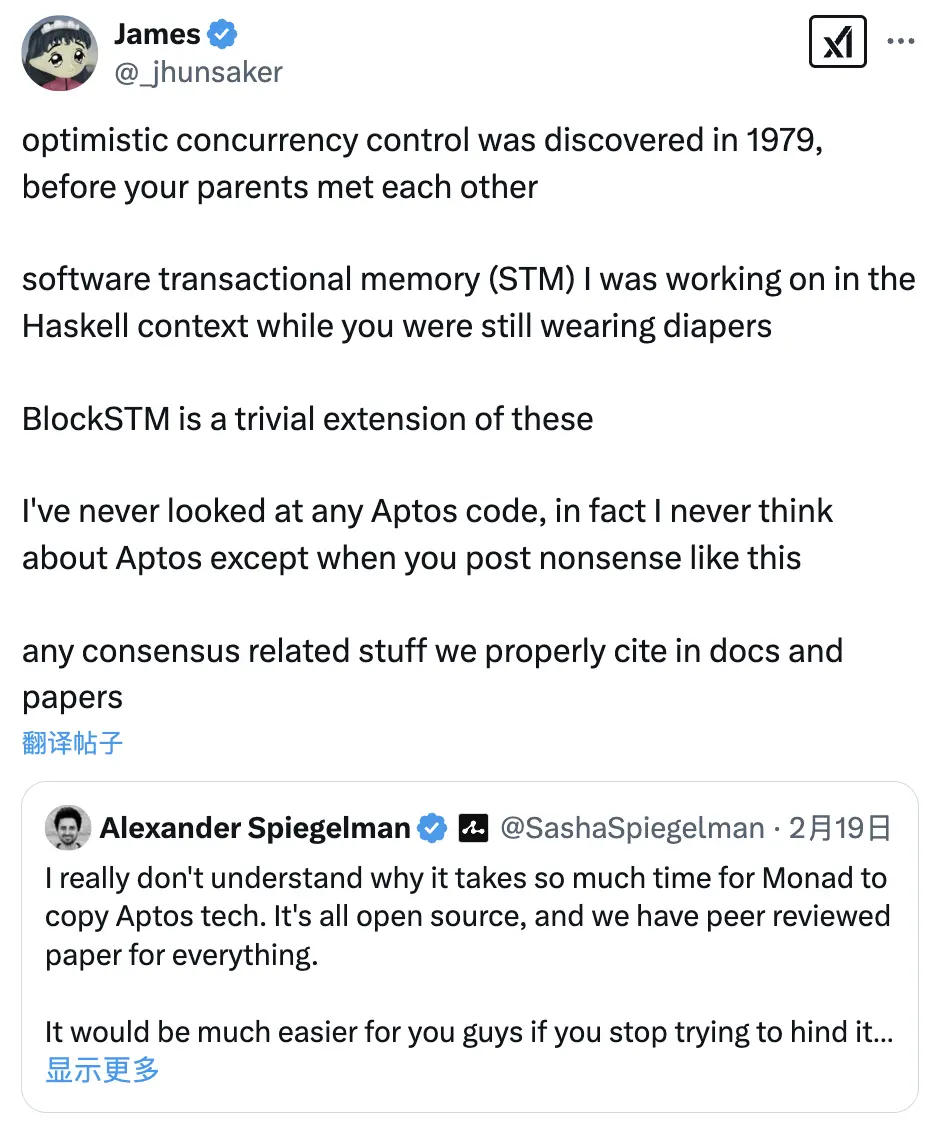
Seeing Hunsaker refuse to acknowledge, Spiegelman again presented the facts: "There's no need to attack the person instead of the issue. We all know how and why Monad was created. BlockSTM is one of the few (if not the only) STMs that has been put into production. Before BlockSTM, nothing could really achieve efficiency. Given your background, you should know this. While there are thousands of papers, none can truly scale. BlockSTM is a breakthrough, and BlockSTM v2 is the future." He then flaunted his credentials: "By the way, I don't know about you, but I was still a baby when I didn't even have diapers."
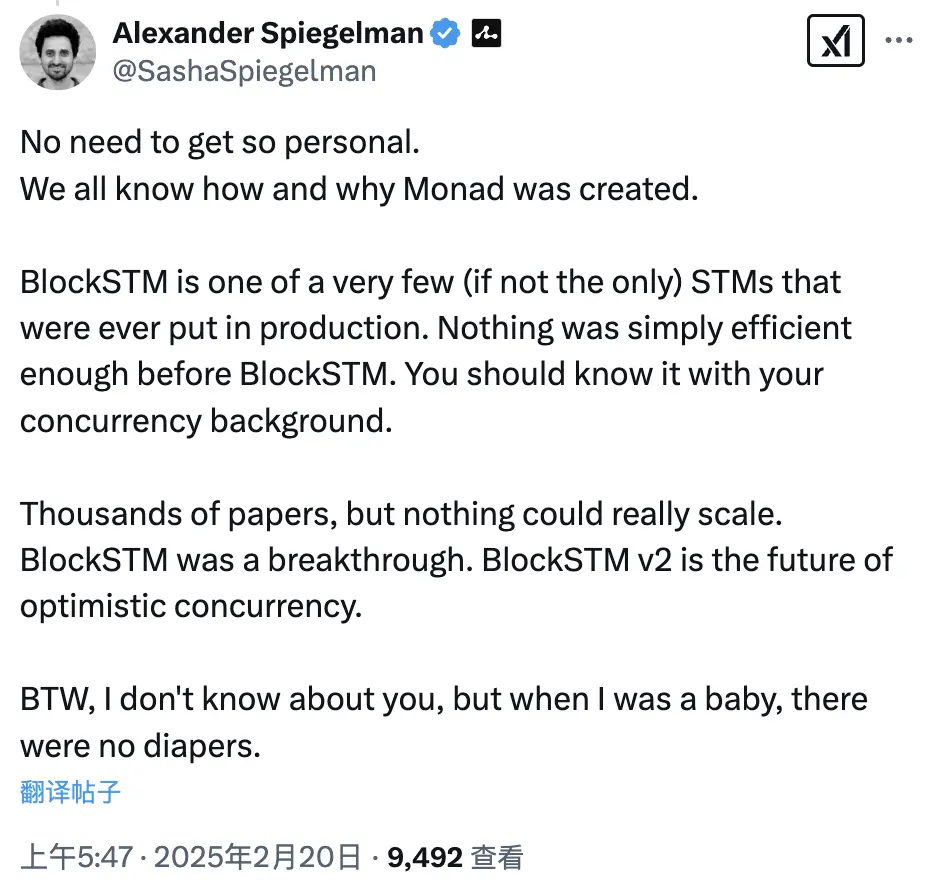
As the tension escalated, Hunsaker directly skipped the technical issues and retorted: "Were you previously on the ground?" At this point, Spiegelman was quite speechless and helplessly countered: "Do you know the difference between read-write locks and mutexes?" Hunsaker did not reply this time.
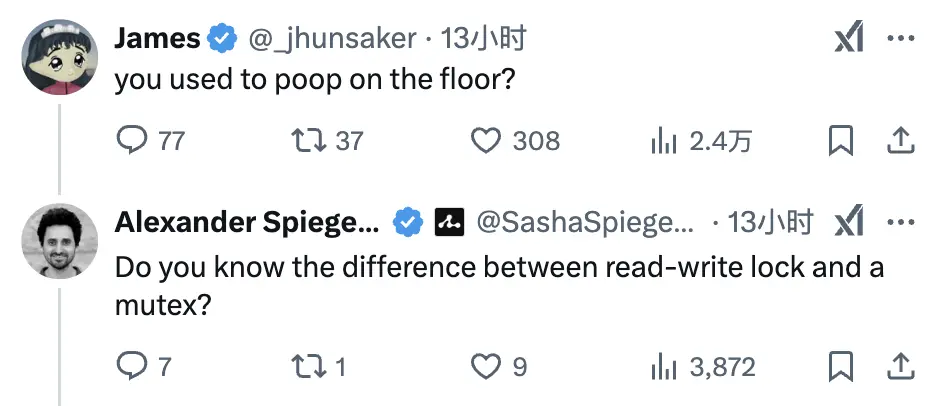
Later, Spiegelman mocked in the comments: "I guess by the time you finally launch in 2029, we will all know the truth." He also lamented: "Monad is copying our technology; if they could acknowledge and give us the recognition we deserve for our research and engineering efforts, that might be acceptable."

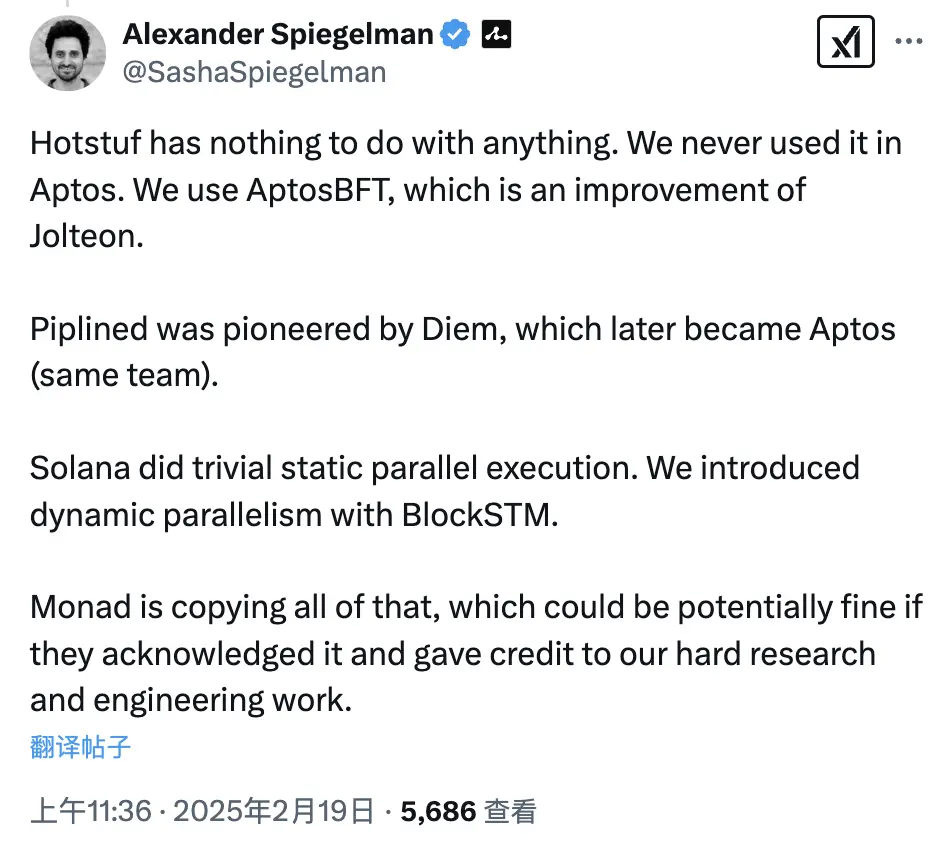
Is the Frequent Plagiarism Incident of New Public Chains a Feature of the "Crypto Circle's Open Source Culture"?
Plagiarism controversies among new public chains are common in the cryptocurrency field. Sonic's high-performance design was once questioned for mimicking Solana's PoH and pipelined architecture; Sui and Aptos, both derived from Diem, faced a "brotherly dispute" over the similarities in the Move language and parallel execution; Aleo's zk-SNARKs were accused of copying zkSync's ZKP framework; Berachain's modular architecture and IBC functionality were seen by the Cosmos community as a "luxury version of a fork"; and Mantra's RWA tokenization model was considered to have drawn from Ondo Finance's successful experience.
The crypto industry values the spirit of open source, and most projects make their code public. In the current crypto market, where the saying "time is money" is vividly illustrated, the phenomenon of "fast fish eating slow fish" is common. Open source culture has given rise to some projects that directly Ctrl C + Ctrl V code. Even in non-crypto fields, early development of the Linux kernel also sparked disputes over code contribution attribution.
This open source culture has greatly lowered the entry barrier for new public chains, allowing new projects to rapidly iterate while standing on the shoulders of giants. In the debate between Monad and Aptos, Aptos's open-source BlockSTM provides a reference for the industry, and Monad may draw from it. However, Hunsaker argues that its technology is based on earlier OCC and STM, stemming from the overall progress of the industry, reflecting a common logic among new public chains: open-source achievements are public resources, and borrowing is natural. Open source culture enables new public chains to launch high-performance solutions in a short time, but it also makes the issue of original attribution difficult to resolve.
The Timing of the Dispute Coincides with the Testnet Launch: Is it a Battle for Technology or Traffic?
The timing of this dispute coincides somewhat subtly with Monad's testnet launch. The testnet is a crucial moment for Monad to attract developers, validate technology, and solidify community trust, while Aptos's accusations shifted the focus from Monad's technological showcase to the confrontation between the two.
As a new L1 that has yet to launch its mainnet, Monad has accumulated significant community expectations, bolstered by last year's $225 million funding led by Paradigm and the narrative of being an "Ethereum high-performance evolver." For this testnet, the Monad team was well-prepared, triggering a series of moves to maintain community attention and goodwill right after the launch. Monad officially announced on social media that it had sent test coins to over 8.8 million active Ethereum addresses, while the Backpack wallet was the first to support the Monad testnet, and Wormhole also officially launched the Monad testnet.
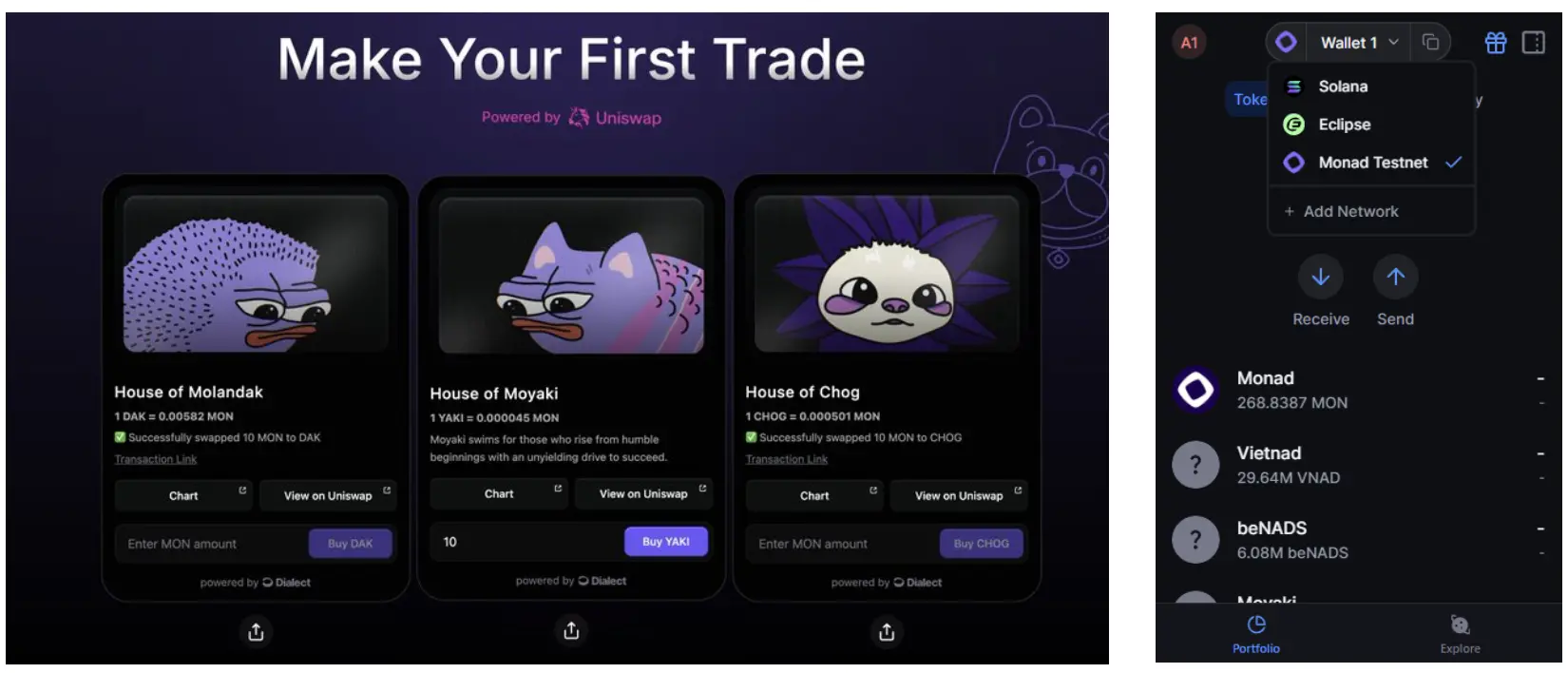
For Monad, the testnet launch is not only an opportunity for technical validation but also a key window to attract EVM developers and users. If it can deliver on its promise of 10,000 TPS, Monad is likely to establish a foothold in the L1 space and may even threaten the market position of high-performance chains like Aptos. On the X platform, community expectations for the testnet have heightened interest, with some users calling it a "project where scientists pick up money," and numerous airdrop tutorials have emerged. This momentum is precisely the narrative capital Monad needs to protect and amplify.
In contrast, Aptos's research director Spiegelman chose to launch accusations on the very day of the testnet launch, perhaps considering market competition. Although it remains undetermined who is the true technological original, Aptos's decision to attack while Monad was gaining significant traffic has evidently yielded results. During the community's observation of the drama, Aptos's native token APT exhibited strong price increases. As of the time of writing, according to market data, APT had risen by 7% in the past 24 hours, briefly reaching $7.
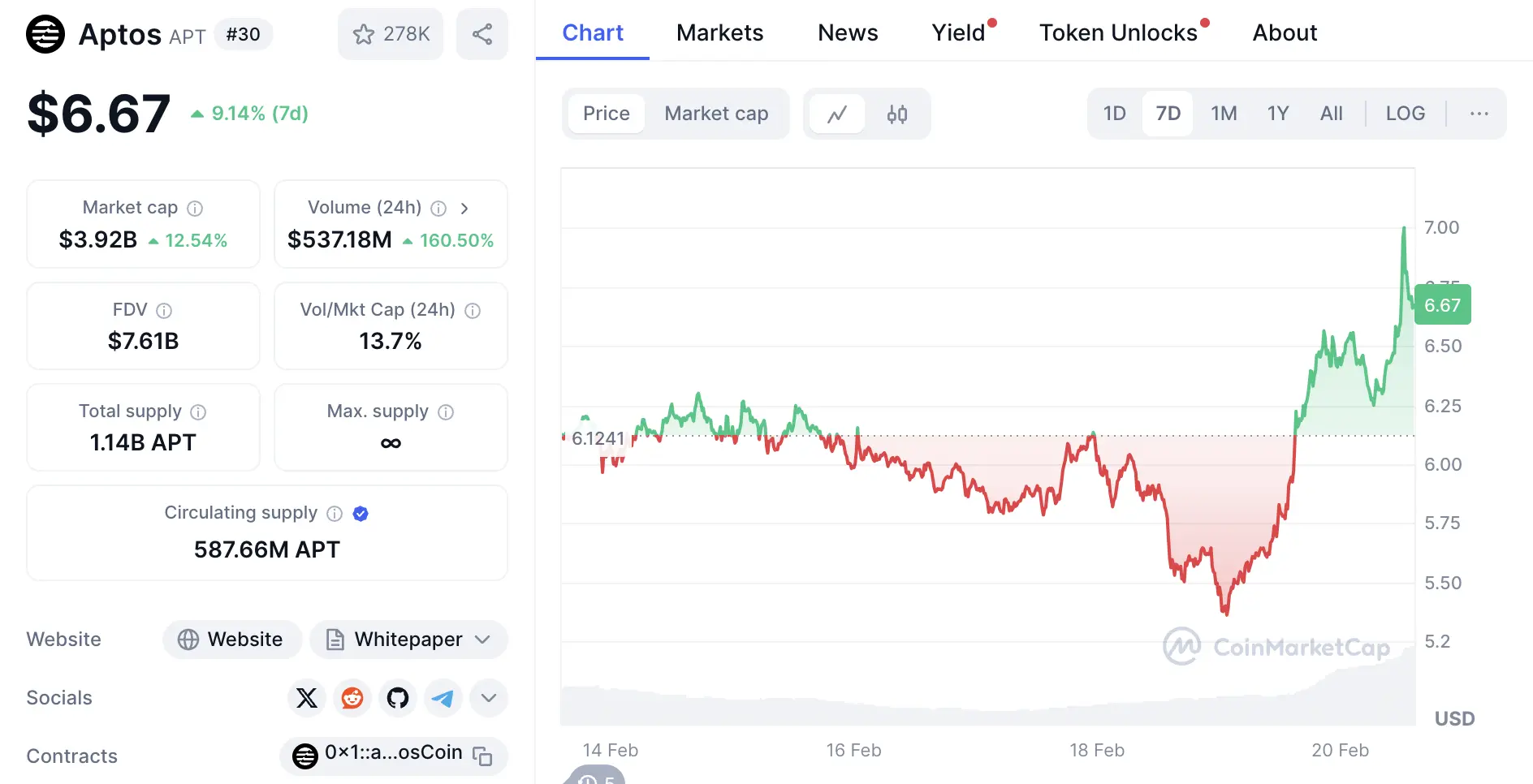
Aptos's move may win more than just a price increase. In the crypto market, attention is a scarce resource. Since the January addition of Aptos network USDC to Coinbase's listing roadmap, there has been little new news from Aptos this year. This accusation has, to some extent, shifted market attention back to Aptos's open-source contributions and technological authority, dousing cold water on the hot Monad.
In the face of this controversy, neither Monad nor Aptos's official accounts have yet made a statement, and BlockBeats will continue to track the developments of the event.
免责声明:本文章仅代表作者个人观点,不代表本平台的立场和观点。本文章仅供信息分享,不构成对任何人的任何投资建议。用户与作者之间的任何争议,与本平台无关。如网页中刊载的文章或图片涉及侵权,请提供相关的权利证明和身份证明发送邮件到support@aicoin.com,本平台相关工作人员将会进行核查。




